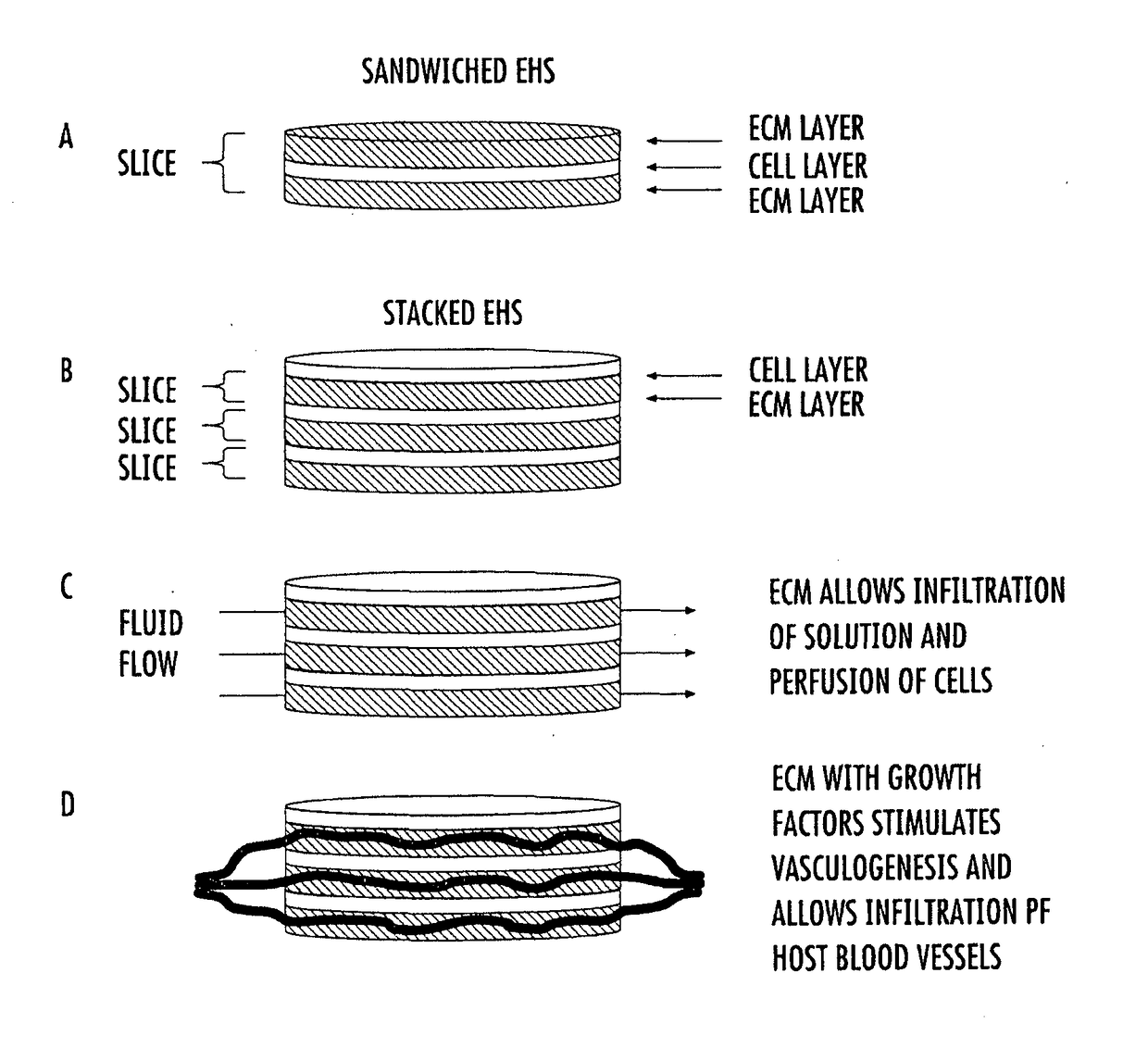Engineered cardiac derived compositions and methods of use
a technology of cardiac tissue and composition, applied in the field of engineering of human muscle and cardiac tissue construct, can solve the problems of cellular damage, short shelf life of cut tissues, limited availability and quantity of source materials, and immunogenic responses, and achieve the effect of preventing cell delamination and maintaining contractile function
- Summary
- Abstract
- Description
- Claims
- Application Information
AI Technical Summary
Benefits of technology
Problems solved by technology
Method used
Image
Examples
examples
[0087]Decellularization of tissue slices. The inventive methods use a procedure developed in our laboratory to obtain decellularized tissue slices from adult rat ventricles. Hearts are harvested from adult Sprague-Dawley rats, rinsed with deionized water using a Langendorff perfusion setup, and stored at −80° C. for a minimum of 16 hours. In an alternate embodiment, samples of pig ventricle are trimmed with dermal punches, the plugs are stored at −80° C. for a minimum of 16 hours, thawed and embedded in agarose, and sectioned using the vibratome. After thawing, atria and the base of the ventricles are removed, and the remaining ventricles are embedded in low gelling temperature agarose. The embedded heart is sliced at in a range of intervals, e.g. 300 μm intervals, parallel to the epicardium using a 7000smz vibrating microtome (Campden Instruments). Slices are trimmed to circular samples (e.g. 8 mm dia) using a dermal punch and decellularized using a protocol modified from Ott et al...
PUM
 Login to View More
Login to View More Abstract
Description
Claims
Application Information
 Login to View More
Login to View More - R&D
- Intellectual Property
- Life Sciences
- Materials
- Tech Scout
- Unparalleled Data Quality
- Higher Quality Content
- 60% Fewer Hallucinations
Browse by: Latest US Patents, China's latest patents, Technical Efficacy Thesaurus, Application Domain, Technology Topic, Popular Technical Reports.
© 2025 PatSnap. All rights reserved.Legal|Privacy policy|Modern Slavery Act Transparency Statement|Sitemap|About US| Contact US: help@patsnap.com



